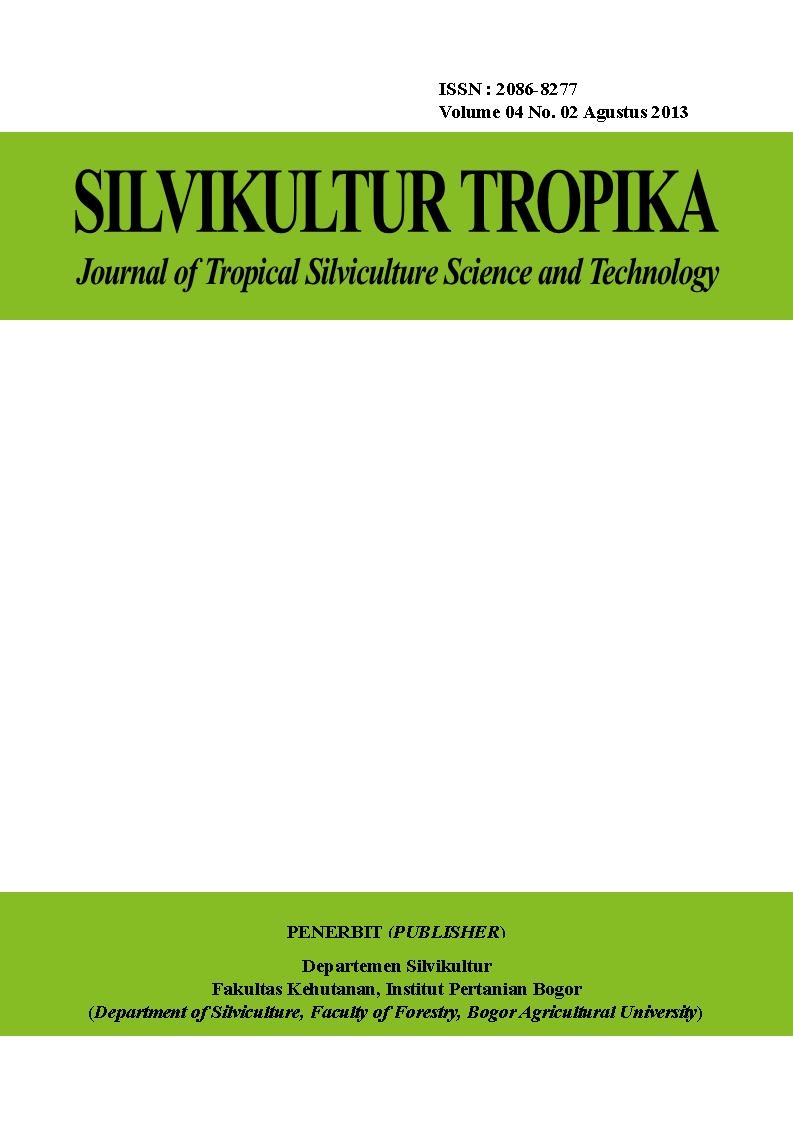Diversity of Pinus merkusii Jungh. et de Vriese of Tapanuli Strain based on Microsatellite Markers
Abstract
Pinus merkusii of Tapanuli strain, which grows naturally in Tapanuli area to the south of Toba Lake, has decreased considerably due to intensive logging. This research aimed at investigating genetic diversity of strain Tapanuli Pine using microsatellite markers on its three populations, i.e. Dolok Tusam Timur, Lobugala, and Parinsoran. Leaf samples were extracted using combined CTAB (cetyl trimethyl ammonium bromide) and DNeasy plant mini kit, then amplified using seven specific microsatellite primers from P. merkusii Aceh strain, i.e. pm01, pm04, pm05, pm07, pm08, pm09a, and pm12. Those primers could amplify polymorphic fragments with different sizes than reported before. Estimation of genetic diversity parameters showed that Lobugala population has the highest heterozygosity (He = 0.4693) followed by Dolok Tusam Timur (He = 0.4614) and Parinsoran (He = 0.4316). Lobugala population was closely related to Parinsoran with 0.0617 genetic distance, and separated from Dolok Tusam Timur by 0.3798 genetic distance. Partition of genetic variation showed that 81% was found within population, and only 18% was among population.
Keywords: genetic diversity, microsatellite, Pinus merkusii










